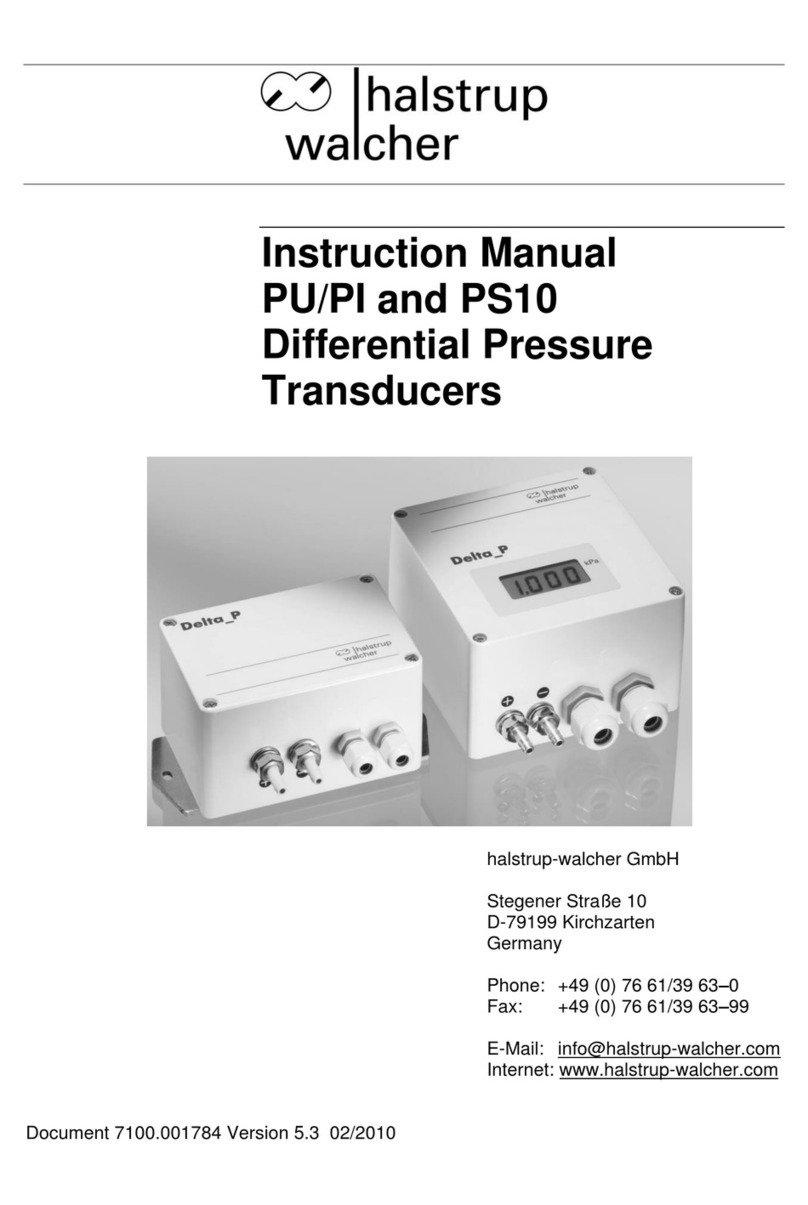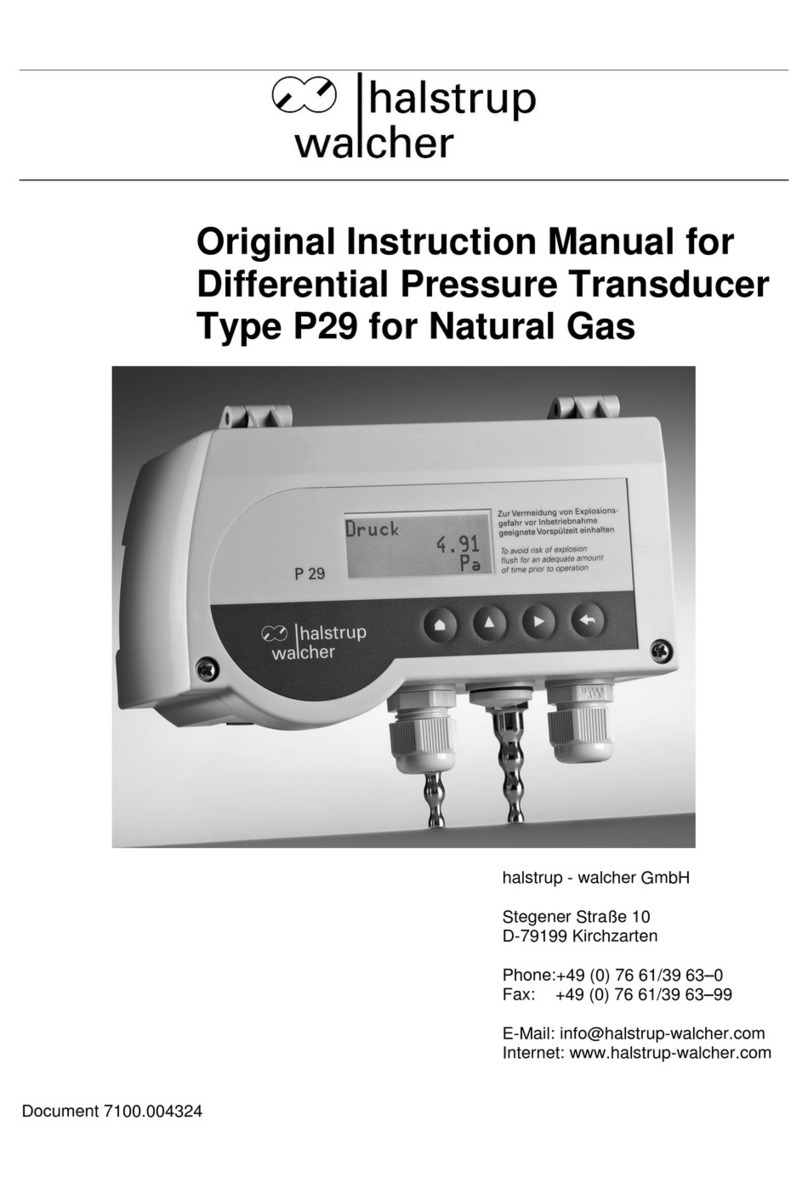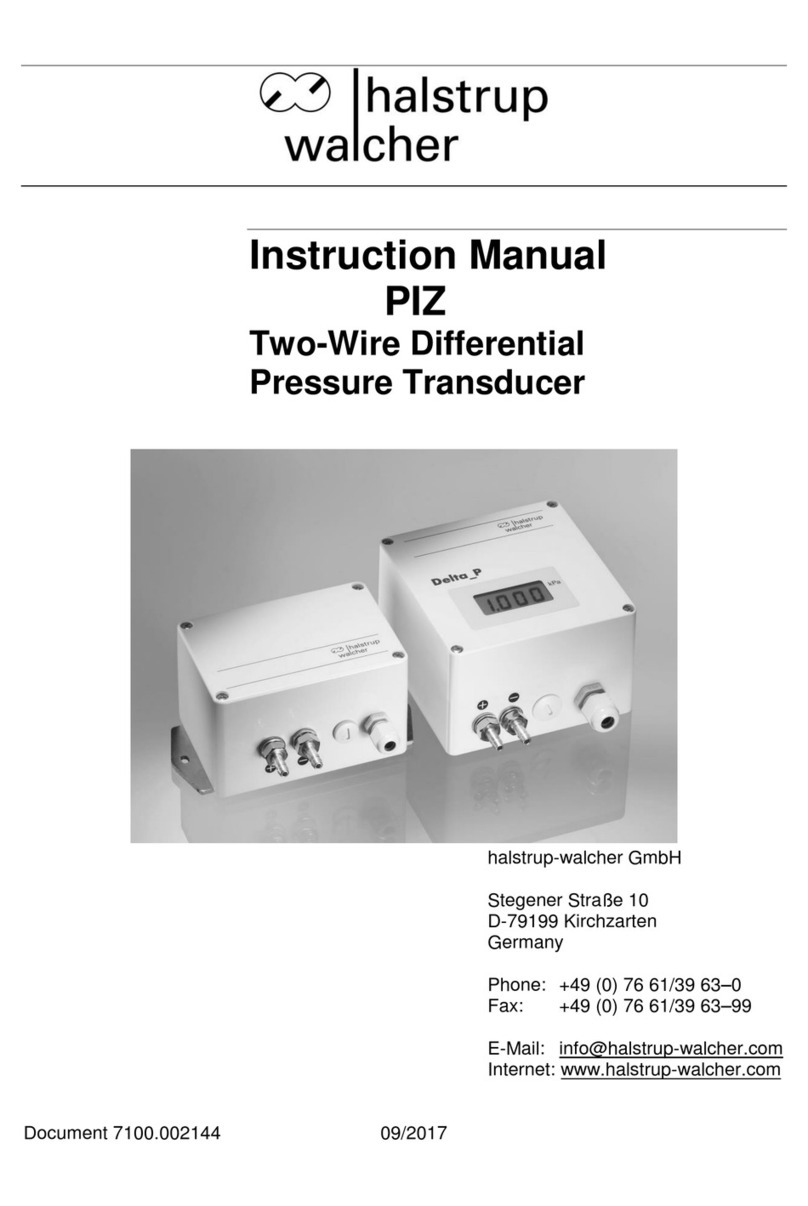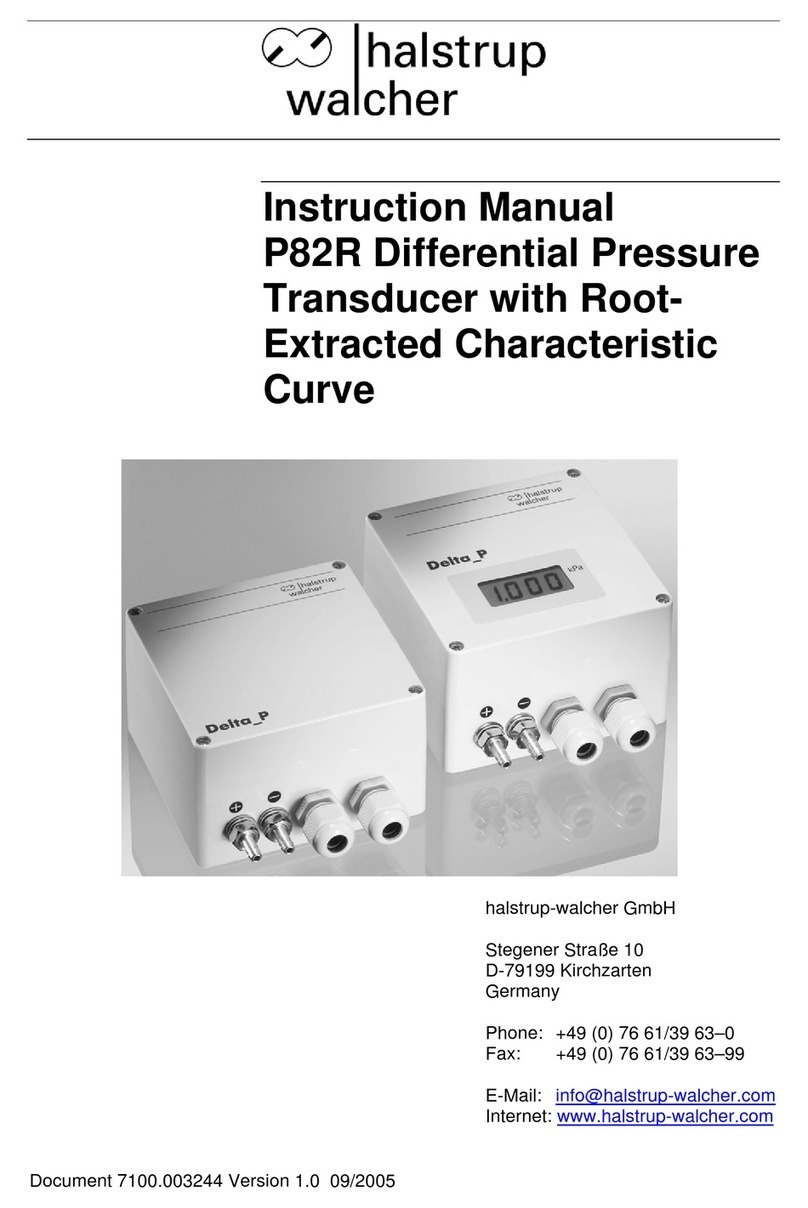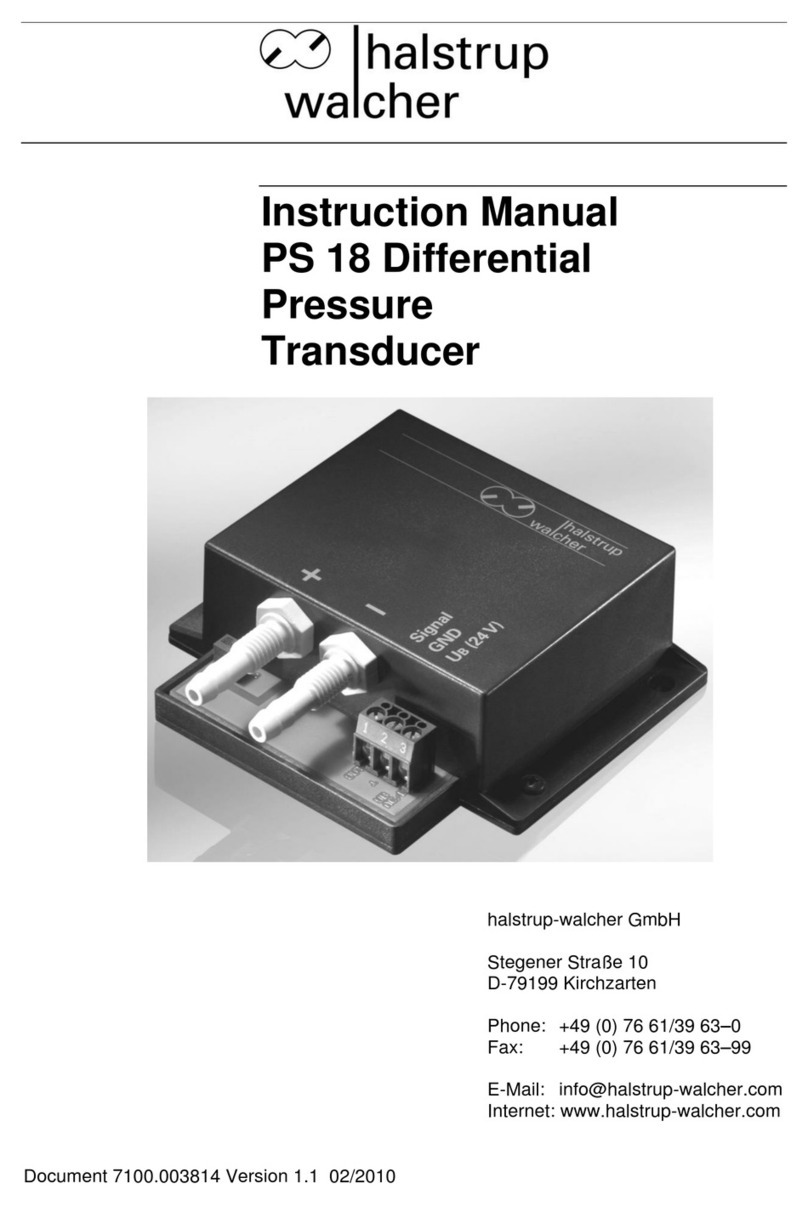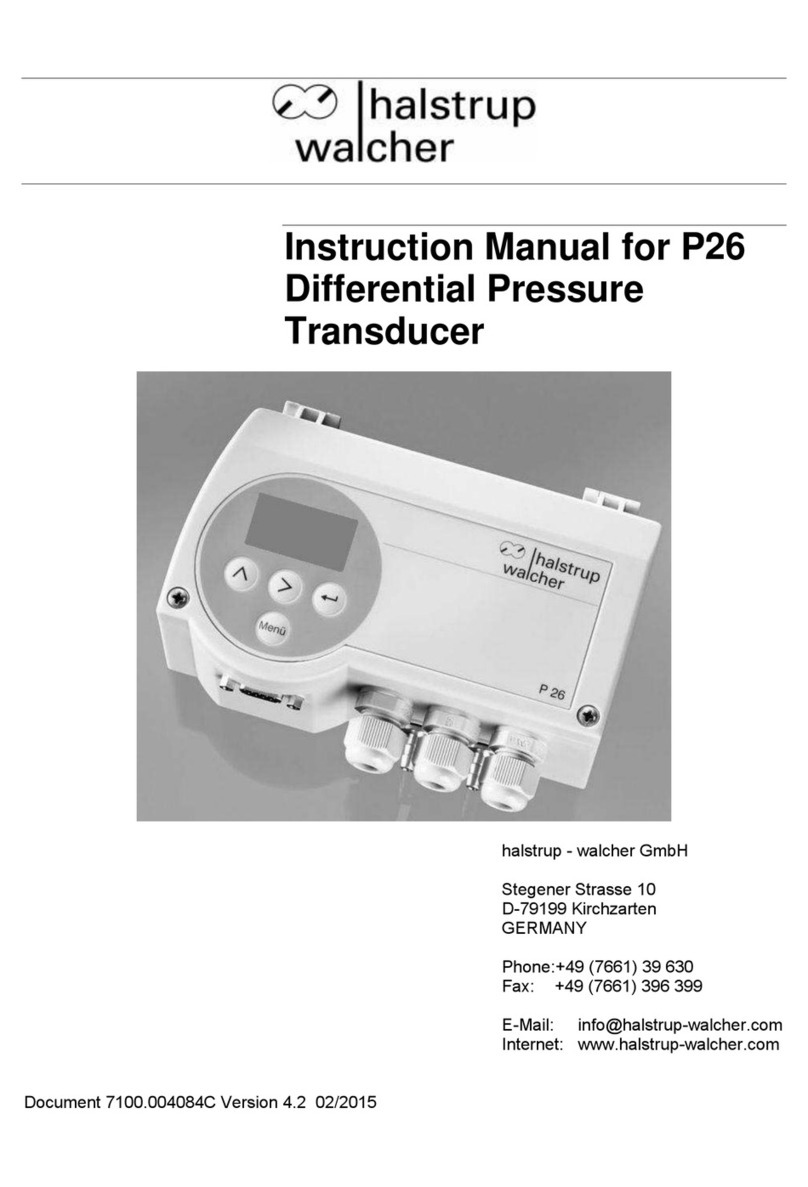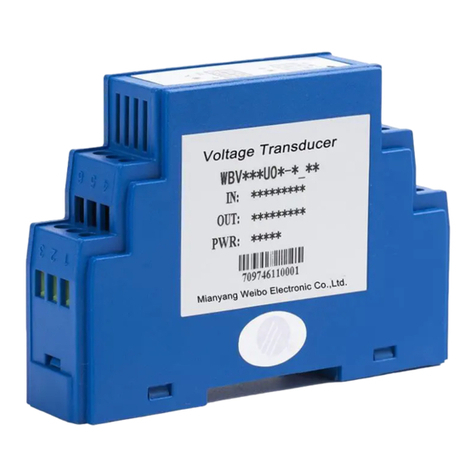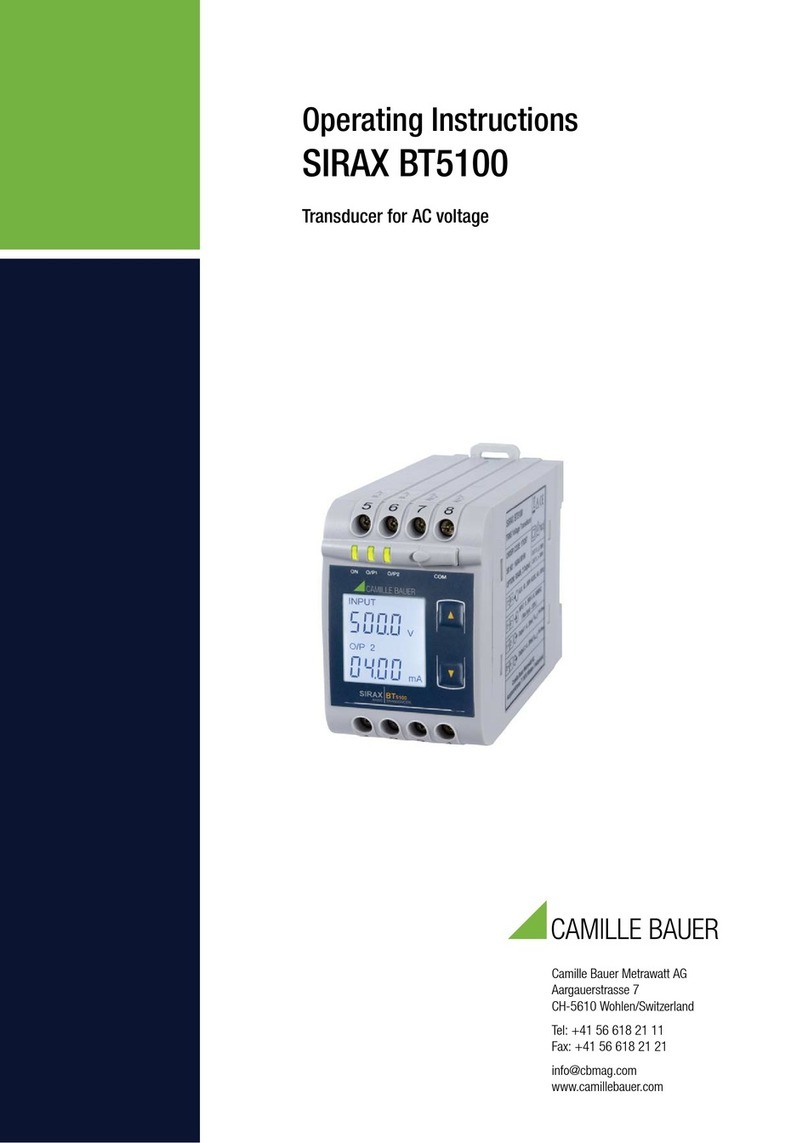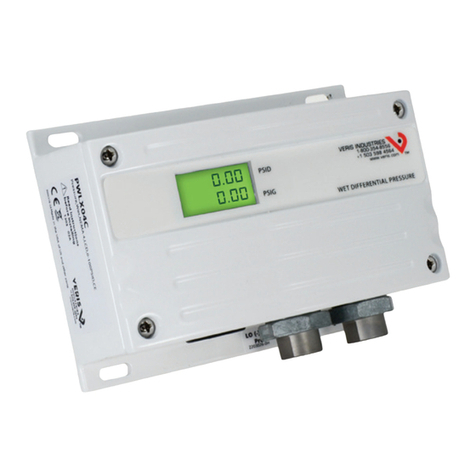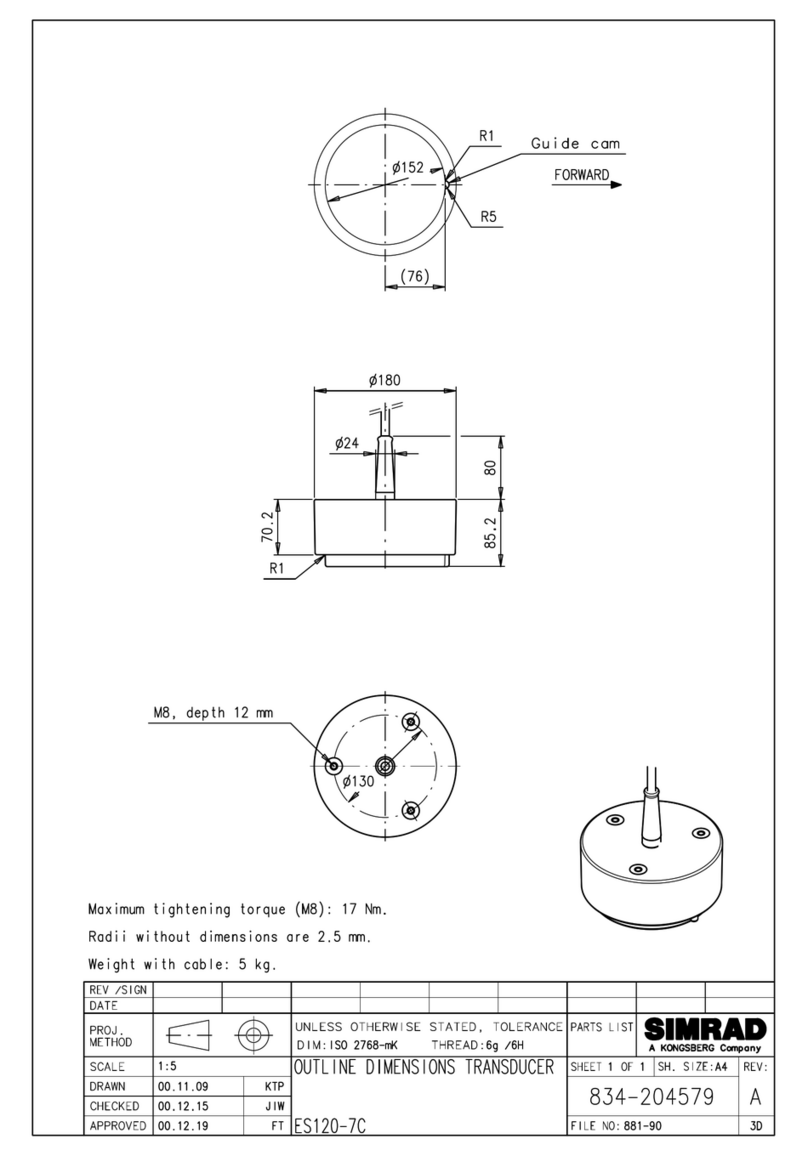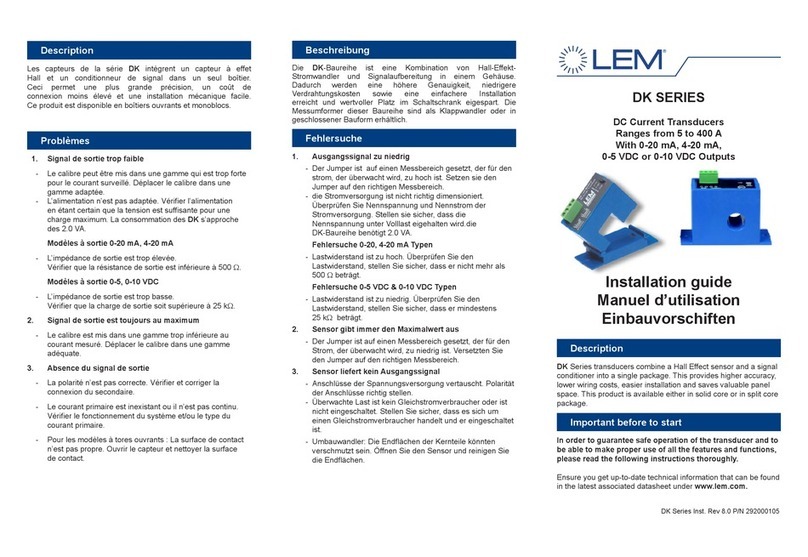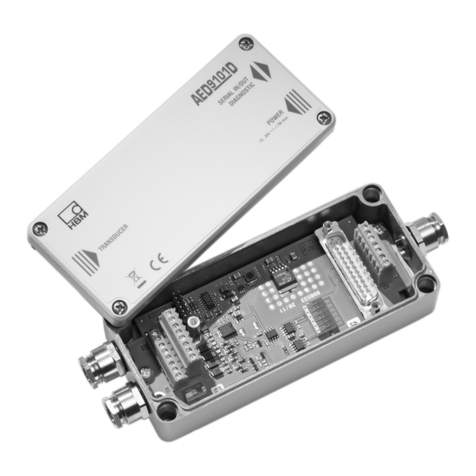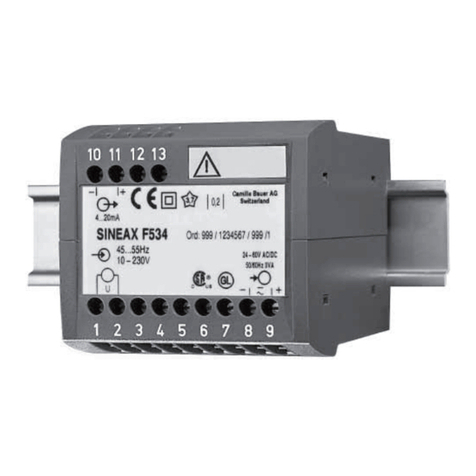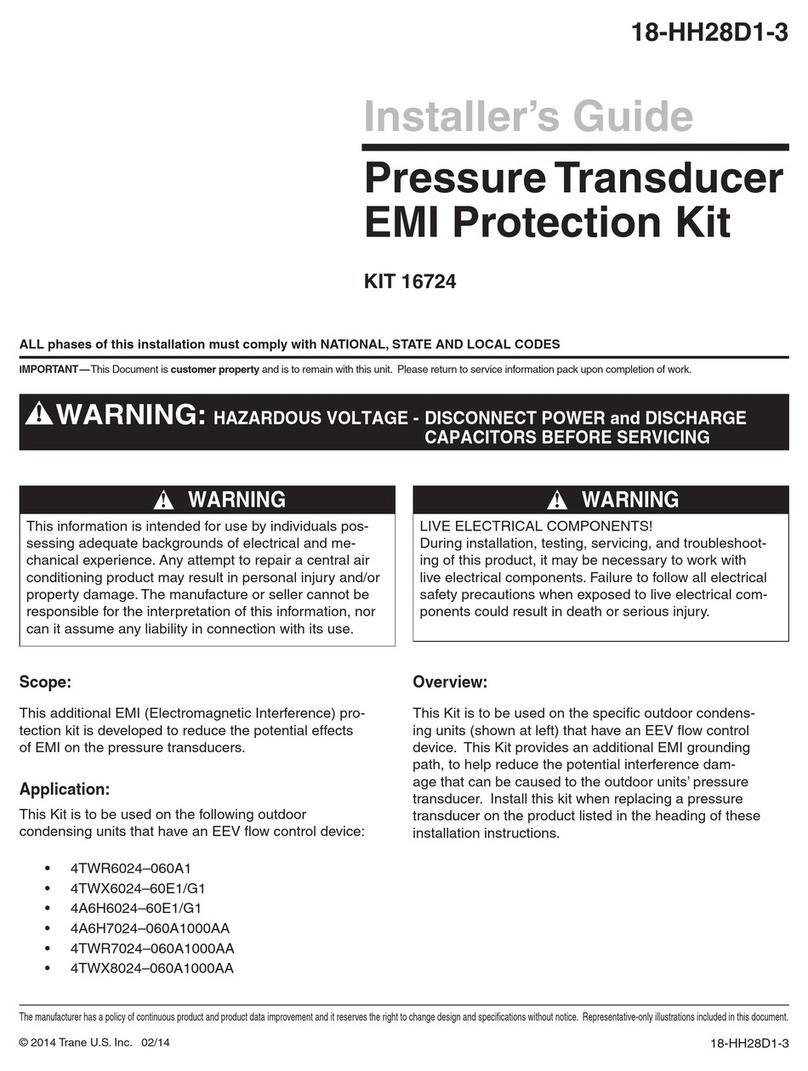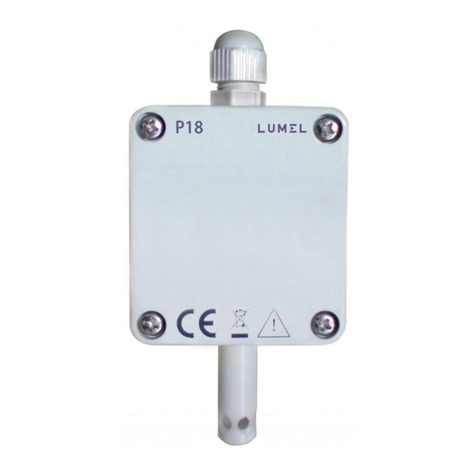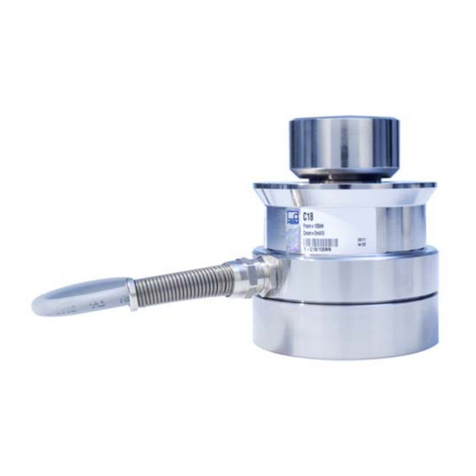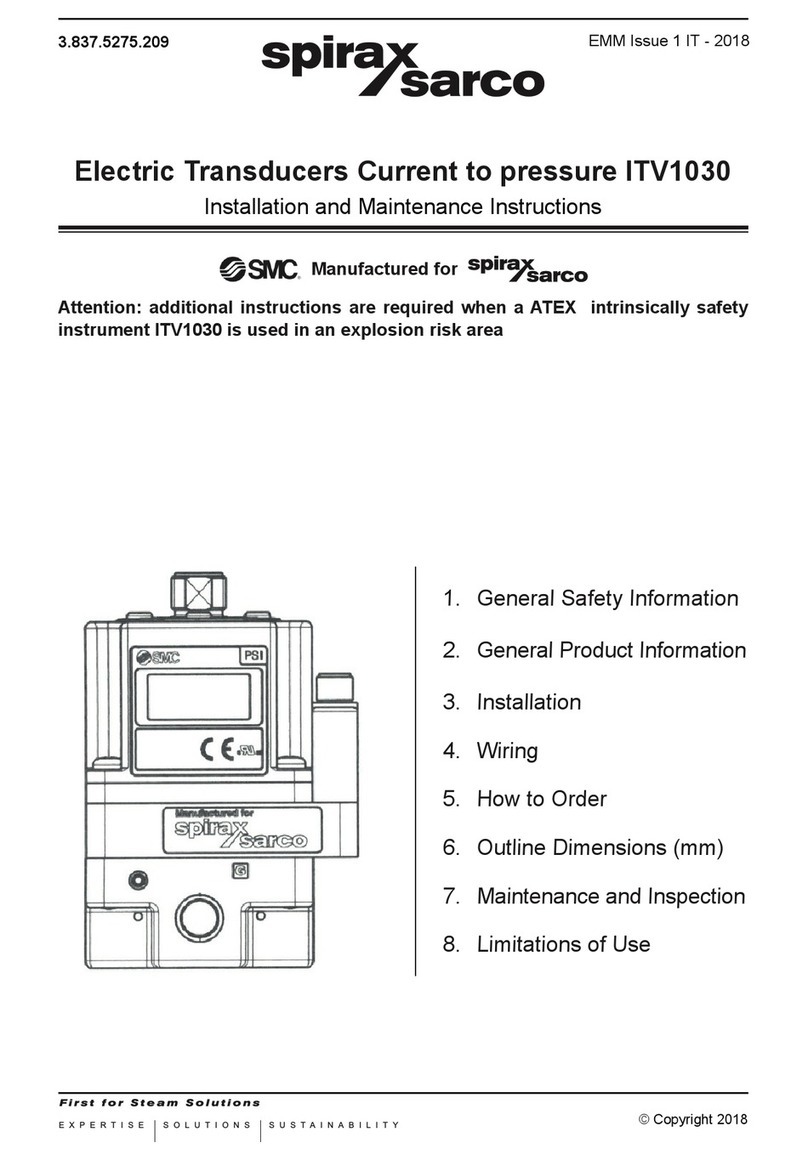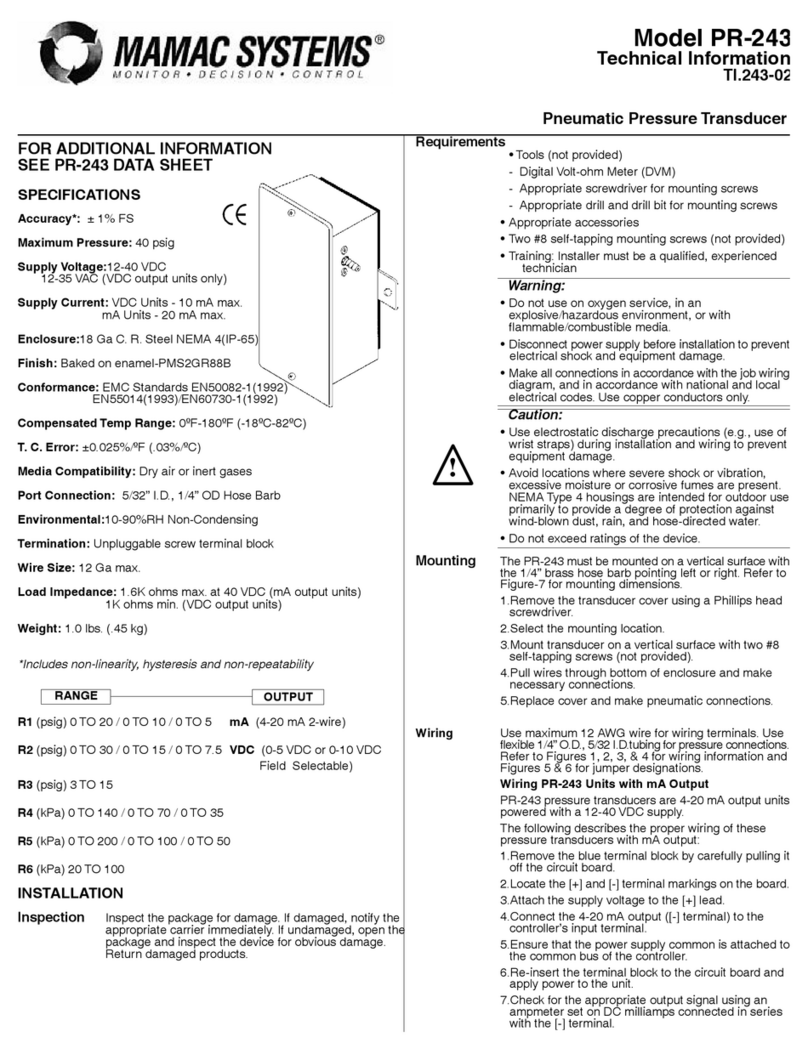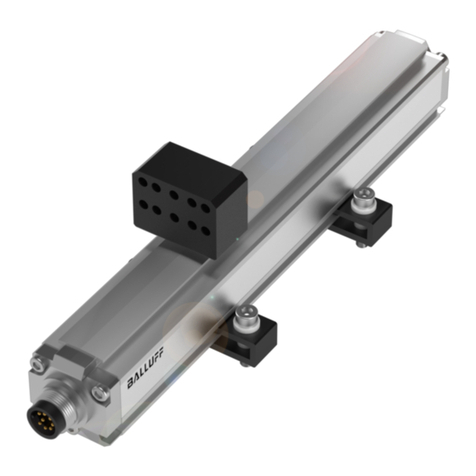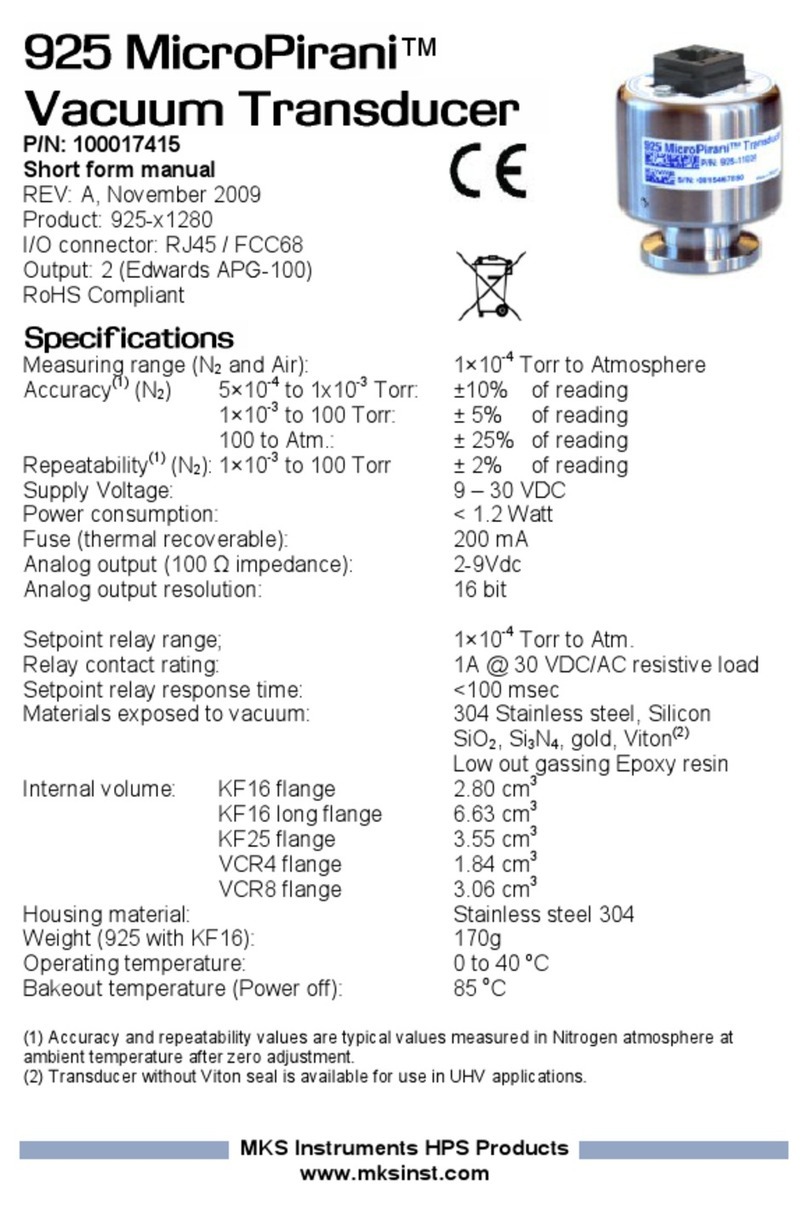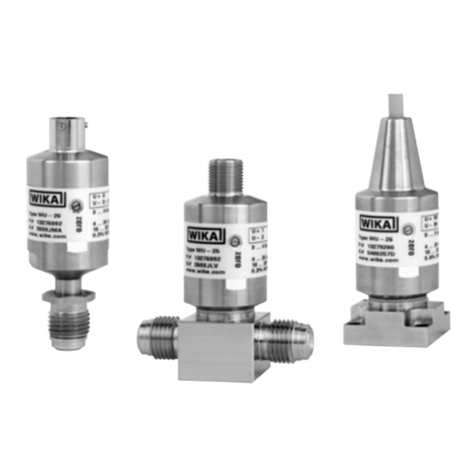
Instruction manual PS11/PK11
4
1 Safety precautions
1.1 Appropriate use
In addition to differential pressure data, the PS11/PK11 differential pressure
transducer also records positive and negative overpressures.
Always observe the operating requirements—particularly the permissible supply
voltage—indicated on the rating plate and in the ”Technical data” section of this
manual.
The instrument may only be handled as indicated in this manual. Modifications to the
instrument are prohibited. The manufacturer is not liable for damages caused by
improper use or failure to follow these instructions. Violations of this type render all
warranty claims null and void.
1.2 Shipping, assembly, electrical connections and start-up
Do not close the pressure inlets during shipping. Changes in barometric pressure
may damage devices with low measuring ranges.
Assembly and the electrical connections should only be handled by professionals.
They should be given proper training and be authorised by the operator of the facility.
The instrument may only be operated by appropriately trained individuals who have
been authorized by the operator of the facility.
Do not carry out a function test with compressed or breathable air. This would
damage instruments with low measuring ranges.
Measurement errors may occur if the instrument is not kept protected from sunlight.
Specific safety precautions are given in individual sections of this manual.
1.3 Troubleshooting, maintenance, repairs, disposal
The individual responsible for the electrical connections must be notified immediately
if the instrument is damaged or if errors occur that cannot be corrected as indicated in
section 6.
This individual must take the instrument out of service until the error has been
corrected and ensure that it cannot be used unintentionally.
Always unplug the supply voltage before opening the instrument!
This instrument requires no maintenance.
Only the manufacturer may perform repairs that require the housing to be opened.
The electronic components of the instrument contain environmentally hazardous
materials and materials that can be reused. The instrument must therefore be sent to
